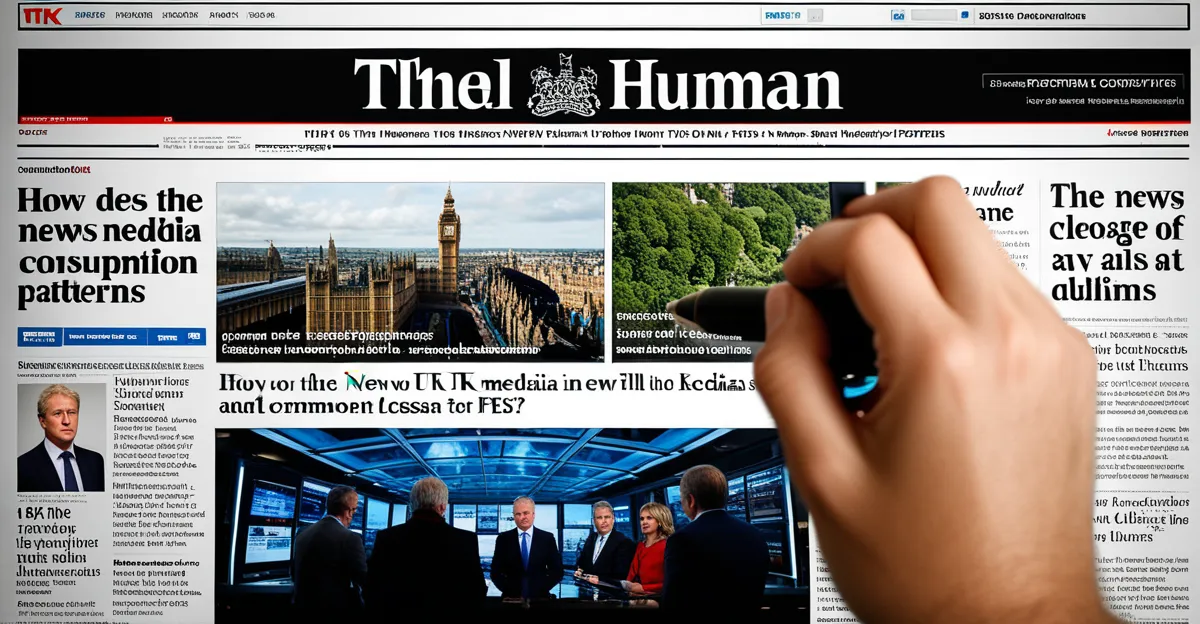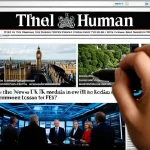Evolving Media Consumption Trends in the UK
The media consumption trends in the UK reflect a striking shift from traditional outlets like newspapers and television to digital platforms. This transition is driven predominantly by the rise of mobile devices, with an increasing segment of the UK news audience accessing content through smartphones and tablets. Recent digital news statistics highlight that mobile news consumption now surpasses desktop usage during peak hours, underlining the importance of portability and instant accessibility.
Social media platforms have become pivotal channels for news discovery and engagement. Platforms like Twitter and Facebook serve as primary sources for many users, offering personalized and real-time updates. This trend is supported by data showing that over half of UK adults regularly get news via social media, indicating a fundamental change in how news is distributed and consumed.
In parallel : What are the key challenges facing the UK’s public transportation system today?
The adoption of video content, podcasts, and immersive storytelling formats further complements these shifts, appealing to the audience’s desire for more engaging and easily digestible information. These developments underscore that UK media consumption trends are increasingly digital-first, mobile-centric, and socially integrated, compelling news organizations to adapt accordingly or risk obsolescence.
News Organizations’ Digital and Mobile Adaptations
News organizations in the UK have embraced digital transformation by prioritizing mobile-first strategies to keep pace with evolving media consumption trends. Given that the UK news audience increasingly accesses content via smartphones, many outlets now design their websites and apps to be fully responsive. This ensures seamless readability and interaction across devices, meeting user expectations for speed and convenience.
Also to read : What are the key challenges facing the UK’s public transportation system today?
The integration of immersive storytelling formats such as video and podcasts exemplifies how these adaptations enhance engagement. Video content is often short, engaging, and optimized for mobile screens, aligning with the audience’s desire for instant, easily digestible news. Podcasts extend reach by offering in-depth analysis accessible anytime, supporting on-the-go consumption.
Technological investments in digital newsrooms underpin these efforts. Advanced content management systems allow editors and journalists to publish in real time and tailor stories for different platforms. Automation tools assist with monitoring trends, enabling rapid responses to breaking news.
Together, these digital and mobile adoption strategies illustrate how UK news organizations innovate to sustain relevance. By embedding technology deeply into workflows, they serve a mobile-first audience while optimizing content distribution based on emerging digital news statistics reflecting user preferences.
Social Media Integration and Audience Engagement
Social media strategies have become central to how UK news outlets engage their diverse UK news audience. Recognizing that social channels are key touchpoints, organizations deploy tailored content to meet the expectations shaped by evolving media consumption trends. Platforms like Twitter, Facebook, and Instagram are no longer mere distribution points but active engagement arenas where news is consumed, discussed, and shared.
Audience engagement relies heavily on interactive and user-generated content initiatives. By encouraging comments, polls, and live discussions, news outlets foster a sense of community, promoting deeper participation. This approach transforms passive readers into active contributors, enhancing loyalty and broadening reach. Comment moderation systems are also crucial. They maintain civil discourse and trust, guarding against misinformation and abuse, which directly affects audience retention.
Moreover, analytics from digital news statistics guide content personalization on social media, optimizing timing and format to boost impact. For example, short videos or infographic posts often generate higher engagement on mobile devices, proving the synergy between social media strategies and mobile-first consumption habits.
In sum, embracing social media not only amplifies news distribution but actively shapes engagement, allowing UK news outlets to connect dynamically with their audience in real time.
Business Models and Revenue Innovation
News organizations have had to rethink their news revenue models to thrive amid shifting media consumption trends. The increased reliance on digital platforms has driven many UK outlets to implement digital subscriptions and paywalls as primary income sources. These paywalls range from hard restrictions to metered models allowing limited free access, balancing audience reach with revenue generation.
Digital subscriptions provide steady, predictable funding, fostering deeper connections with the UK news audience. This approach supports high-quality journalism by reducing dependence on volatile advertising income. To complement subscriptions, native advertising and sponsored content strategies have grown. These ads blend seamlessly with editorial content, enhancing user experience without disrupting engagement.
Sustainable funding models also experiment with memberships, events, and diversified content offerings. Such innovation aims to cushion revenue against changes in consumption habits revealed by digital news statistics. By continually adapting, UK news outlets can fund robust journalism in a competitive, evolving landscape.
Understanding the nuances of monetization helps news organizations refine their strategies, ensuring viability as consumer behaviors continue to shift toward mobile and social consumption habits.
Challenges and Future Outlook for UK News Media
UK news media face significant newsroom challenges, particularly combating misinformation that threatens public trust. Ensuring credibility requires rigorous fact-checking and transparent reporting. Sustainable practices include investing in editorial oversight and educating the UK news audience about reliable sources.
Media regulation is evolving to address digital complexities. New policies focus on transparency in algorithms and responsibilities of platforms distributing news, impacting how content is delivered online. These regulations aim to balance freedom of expression with accountability, shaping the future landscape.
Looking ahead, the future of news in the UK hinges on adaptation to dynamic media consumption trends. Audiences increasingly demand personalized, interactive content across devices, forcing newsrooms to innovate continuously. Incorporating emerging technology like AI-driven curation and interactive formats promises enhanced engagement.
Additionally, predictions indicate further mobile and social media dominance, requiring agile strategies. News organizations must embrace proactive strategies to maintain relevance, foster audience trust, and uphold journalistic integrity amid rapid change.
Addressing these challenges through strategic investment and forward-thinking policies will define the resilience and success of UK news media in coming years.


